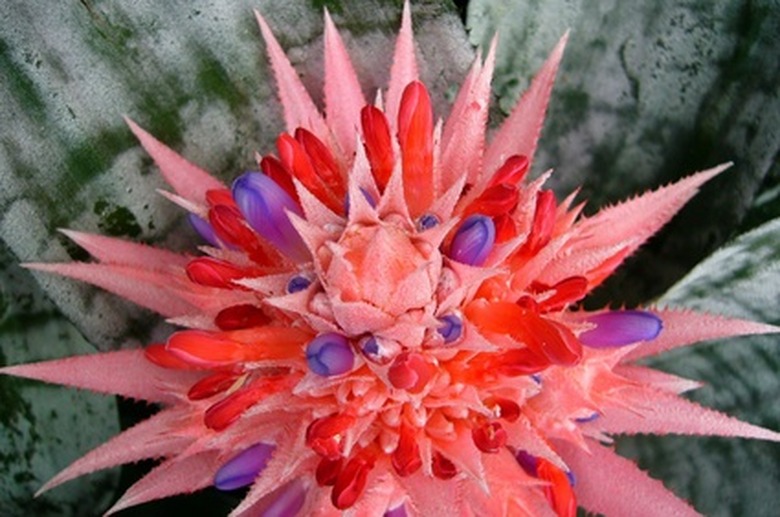Drought-Tolerant Tropical Plants
Tropical plants are those that originate in tropical areas of the planet. Tropical regions tend to have highly humid and warm environments, and because of those factors, tropical plants have specific adaptations to which they are accustomed. Tropical plants generally are characterized by large and vibrant flowers, however, they are diverse. Some tropical plants are capable of tolerating drought conditions, while others are not.
Black-Eyed Susan Vine
The black-eyed Susan vine is known scientifically is Thunbergia alata. It is a perennial and herbaceous plant that is part of the Acanthaceae family. The climbing vine is native to tropical East Africa. The black-eyed Susan is frequently seen as a ornamental plant in gardens, and also in hanging containers. The vines thrive when grown in partial shade or full sun, and can manage dry, drought conditions. The blooms show up in colors such as orange, red, yellow and reddish orange. The vines tend to reach between 6 and 8 feet in height.
- Tropical plants are those that originate in tropical areas of the planet.
- Tropical plants generally are characterized by large and vibrant flowers, however, they are diverse.
Euphorbia
Euphorbia is a genus of flowering plants. It is part of the Euphorbiaceae family. Euphorbias generally appear in subtropical and tropical regions of the Americas and Africa. Members of the Euphorbia genus are called "spurges." They are perennial or annual herbs, trees or woody shrubs. The drought-tolerant plants emit a harmful sap (known as latex) that has a milky texture and appearance. In rare instances, the sap appears to be more yellowish than white. Spurges all bear flowers that are unisex and monoecious (meaning that the same exact plant produces both female and male flowers).
- Euphorbia is a genus of flowering plants.
- The drought-tolerant plants emit a harmful sap (known as latex) that has a milky texture and appearance.
Bromeliads
Bromeliads are drought-tolerant plants that are members of the Bromeliaceae family. Perhaps the most well-known example of a bromeliad is the pineapple. Another example of a bromeliad plant is Spanish moss. Bromeliads are neotropical plants that only grow in the subtropics and tropics of the New World. The plants have diverse types of leaves, with some of the leaves appearing as thin as needles, while others appearing very flat and broad. The leaves can be various different colors, such as green, gold and maroon. Although less common, some bromeliads also have yellow, red, cream or white leaves. Many bromeliads have subtle scents, while others have stronger fragrances.
- Bromeliads are drought-tolerant plants that are members of the Bromeliaceae family.
- Many bromeliads have subtle scents, while others have stronger fragrances.
